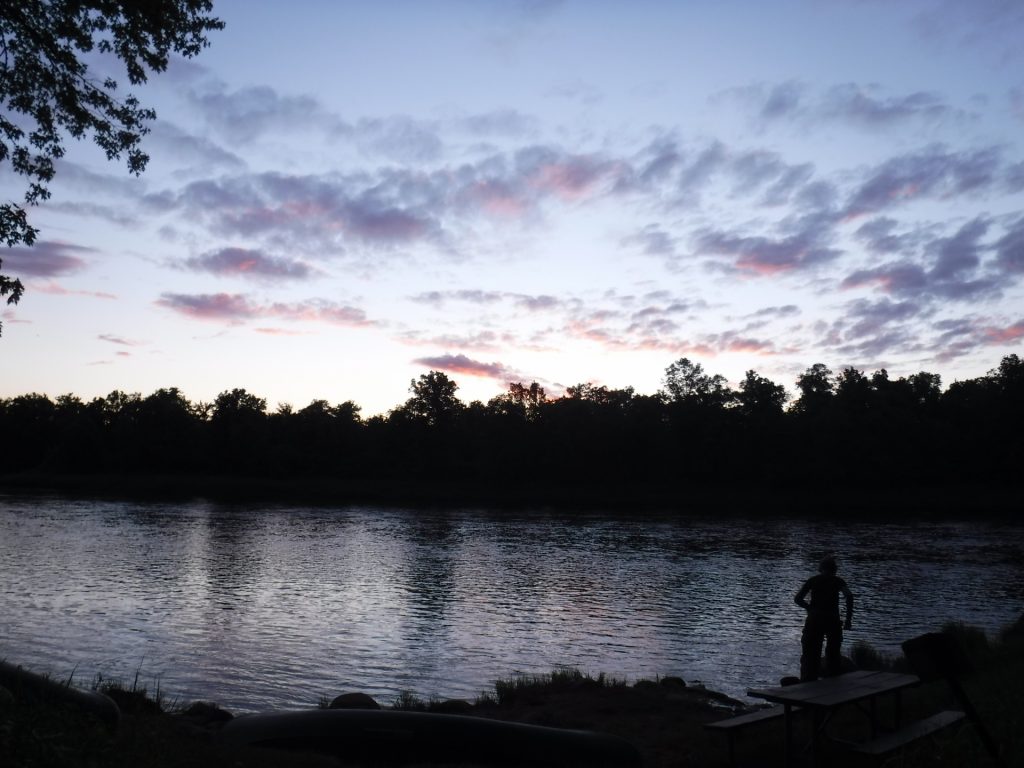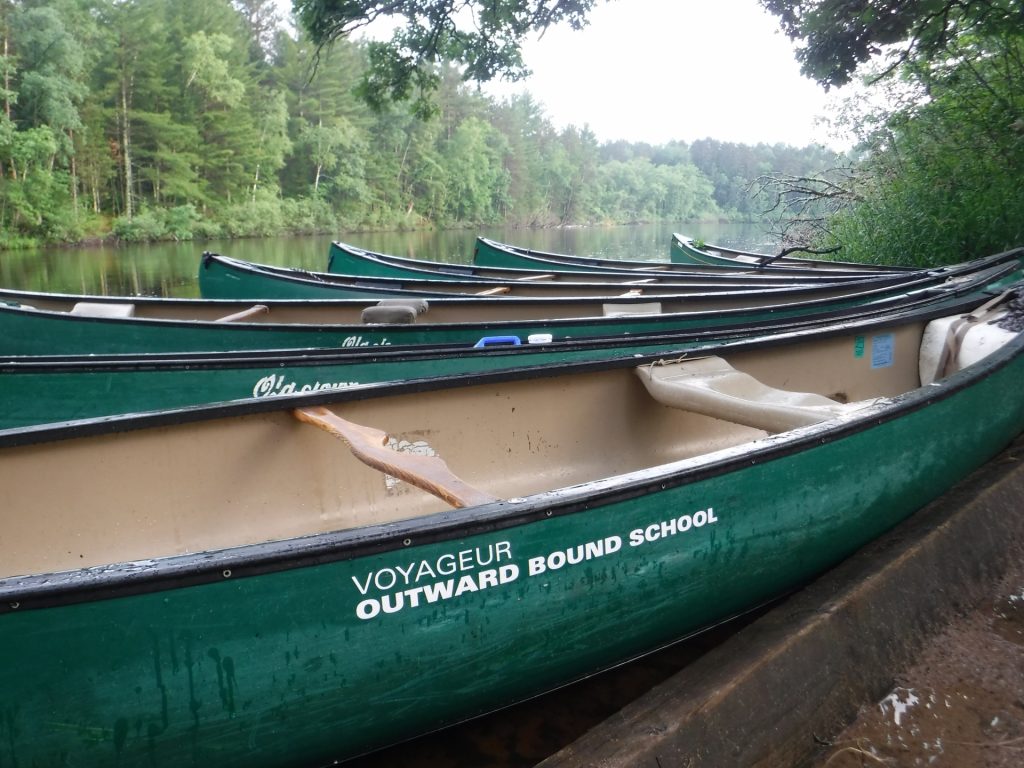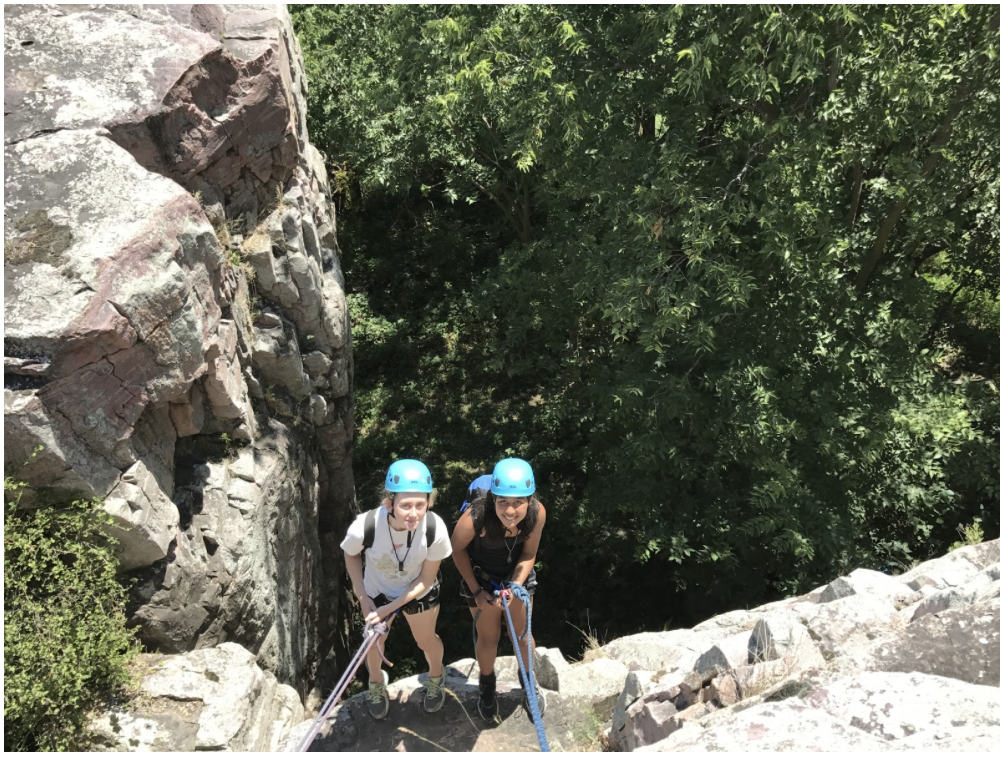
A crisp dawn breaks on the Namekagon River, right as students begin their day of travel on the St. Croix Riverway Canoeing & Rock Climbing course.
We are well into spring, the school calendar is just wrapping up, and it’s time to start thinking about summer plans for your son or daughter. That’s why I’m highlighting one specific course that deserves your consideration: St. Croix Riverway Canoeing and Rock Climbing. Ranging from 8-10 days in length, this trip is designed for middle schoolers that are ready to take on a new adventure and experience a summer out of the ordinary. To help me fill in the details, I interviewed Emily Ten Eyck and Dan Stark, who have instructed this course several times and have a great deal of experience in this course area.
St. Croix Riverway
The St. Croix Riverway is where the St. Croix River and the Namekagon River join in a 200-mile stretch that straddles Wisconsin and Minnesota, that eventually pours into the Mississippi River. Dan adds, “This protected area of land and river is a great environment for students to learn how to canoe and navigate. The river transitions from narrow and windy to wider with Class I and II rapids, and back again over the 100-mile stretch we paddle.”

Voyageur canoes are tied up on the banks of the St. Croix River after a full day of travel.
This area is home to a rich history of French voyageurs who used these waterways to hunt and trade beaver pelts, and then loggers who came later and established a flourishing lumber trade. While paddling, students are able to witness remnants of this history in the railroads, cabins and dams along the way.
The biodiversity in the National Scenic Riverway is another factor that makes this course area beautiful and noteworthy. With an abundance of plants and wildlife, its common to observe ospreys, bald eagles, turtles, beavers, and many more species from the comfort of your own canoe. Dan adds, “The Namekagon river had lots of ferns as a part of the underbrush and looks kind of like Jurassic Park… without the dinosaurs.”
This area in the summer sees a combination of warm, sunny weather, with semi frequent bouts of rain. When asking Emily what the most challenging aspect of this course is, she responded: “Embracing the weather is both one of the most challenging and rewarding aspects of the course. This often involves understanding that there are things in life that are in our control and many things that are outside of our control. When it rains, the only thing we have control over is how we react and respond to the situation.”
Course Flow
The St. Croix Riverway Canoeing and Rock Climbing course is structured in a way that flows with the progression of the students. “A group will spend the first portion of their course building their community,” Emily says. “As a group acquires more wilderness and leadership skills, they will gain more autonomy, get a taste of independence and take on increasing responsibility as they progress through their course.”
The majority of the itinerary takes place on the water, though the last section is set aside for rock climbing. I asked Emily what makes canoeing and rock climbing work cohesively together in the same course, and she responded: “For the courses I have led, the rock climbing section feels much like the ‘capstone’ of the course. The rock climbing day is when they can really focus on supporting one another, in a way “test” the strength of the community that they have built. Individuals also learn about their own comfort zones and learn the importance of stepping into their ‘stretch zone’ so they can learn and grow as individuals.”

Students learn to rappel during the rock climbing section of course.
A Typical Day
What’s a typical day on the St. Croix Riverway Canoeing and Rock Climbing course? Emily provided us with a peek:
Morning
- Wake up between 6 and 7:00am, and have a quick meeting to discuss roles for the day.
- Take down camp, eat breakfast, pack packs and load canoes.
- One final student-lead meeting takes place in which the “Leaders of the Day” give a map briefing to the group, discuss the plan for the day, and lead a game.
Midday
- Travel together down the river, take snack and lunch breaks. Most days, Instructors lead a lesson or activity during breaks — these lessons can cover anything from wilderness skills, communication styles and goal setting.
- Arrive at camp. Set up tents, tarps and handwashing stations.
Evening
- Students share the responsibility of cooking dinner for each other. Before everyone shares in the feast, they gather for a dinner circle which is a time for the group to reflect on the day. Then the delicious, well-deserved meal is served.
- The day ends with an evening meeting, where students reflect upon the day as a group and as individuals. This usually includes time for appreciations, and the giving and receiving of positive and constructive feedback. Instructors may lead the group through other reflection activities or lessons. Evening meeting ends with a conversation about what will happen the next day.
- Head to bed to rest up for the next day.
This course, like all Outward Bound courses, exposes students to new experiences that are meant to challenge them. “Middle school students will learn how to work as a group, learn leadership and wilderness skills… They will have opportunities to try new things and step out of their comfort zones,” says Emily. “They will learn how they deal with difficult or stressful situations and how to work successfully with people from different walks of life.”
Let this summer be a time to explore somewhere completely new. Choose an unfamiliar place and go for it. Dan says, “The most rewarding part of these expeditions is the feeling of accomplishment as your crew learns how to manage the challenges of the river, working together, and navigating on their own.”
On these expeditions, the possibilities of growth are as vast as the riverways. Whatever this summer holds for your family, consider a course on the St. Croix Riverway. Give your child the opportunity to learn about himself, connect with the rich ecosystem of the National Scenic Riverway, and delve into an adventure he won’t forget.
About the Author
Eva Johnson has worked at the Colorado Outward Bound School (COBS) as a Field Intern and Logistics Coordinator. She’s a Colorado native and if she’s not in Leadville working at COBS, she’s probably adventuring in South America, surfing on the rugged Oregon coast or teaching kids to climb rocks.
OTHER POSTS YOU MAY LIKE
Read More
Read More
Read More




